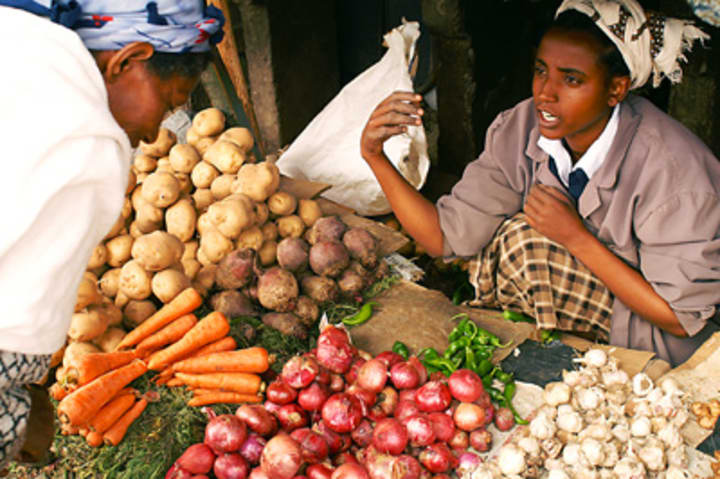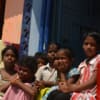
Swedish aid has been flowing into Indonesia for three decades. But in the next five years, beginning 2009, it will take a new form-one that moves beyond mere funding and toward a range of cooperation schemes.
The Swedish International Development Cooperation Agency is set to phase in what it calls partner-driven cooperation in Indonesia and six other countries that fall under the category of selective cooperation following the Swedish government’s decision in 2007 to overhaul its development strategy.
The Swedish government wants to achieve a more focused development policy, and the first step it took was to nearly halve the number of countries with which it will cooperate. Sida will maintain bilateral cooperation with 33 of its 67 partner countries, and pilot the new strategy in seven. It will pull out from the rest.
Sweden will not in any way cut down aid. In fact, it is one of only five countries that have reached or exceeded the United Nations’ target level of development assistance at 0.7 percent of gross national income. Sweden sees that it is simply the natural progression of aid.
“It was not so much that the previous strategy was inefficient. I think this is the known evolution over time,” said Anders Nordström, Sida’s director general.
“In order to have a good impact, we need to focus our work,” he stressed.
Modified development strategy
Swedish development assistance remains focused on combating poverty by ensuring sustainable development in the areas of democracy and human rights, gender equality and the role of women in development, and climate and environment.
Recipients of Swedish aid will fall under five categories based on these priority areas.
Long-term cooperation focused on poverty reduction will be kept in Burkina Faso, Ethiopia, Kenya, Mali, Mozambique, Rwanda, Tanzania, Uganda, Zambia, Bangladesh, Cambodia and Bolivia.
Countries that have recently experienced conflict will also continue to receive aid. These are Burundi, Congo, Liberia, Sierra Leone, Somalia, Sudan, Afghanistan, East Timor, Iraq, West Bank and Gaza, Colombia, and Guatemala.
Eastern European nations on the verge of integration with the European Union are also a priority. They are Albania, Bosnia-Herzegovina, Georgia, Kosovo, Macedonia, Moldavia, Serbia, Turkey and Ukraine.
Selective cooperation countries are Botswana, Namibia, South Africa, India, Indonesia, China and Vietnam.
In the next year or two, development assistance will be phased out in Angola, Ivory Coast, Malawi, Nigeria, the Philippines, Laos, Mongolia, Pakistan, Sri Lanka, Thailand, Chile, El Salvador, Haiti, Honduras, Nicaragua, Lebanon, Armenia, Azerbaijan, Kyrgyzstan, Montenegro and Russia.
A huge portfolio of countries was “too many for a small country like Sweden,” Nordström said.
“In order to have an impact and better results, we need to work with a smaller number of countries,” he explained.
Åsa Hedén, Sida’s leader for development partnerships in China, India and Indonesia, however stressed that Sida’s pullout will be nothing less than responsible.
“We’ll honor all our contracts until the end,” Hedén said.
Why partner-driven cooperation?
Sweden recognized that traditional development cooperation may no longer be relevant in some countries, but it is keen to build upon years of partnership through new and sustainable relations that are largely partner-driven.
It even foresees that partner-driven cooperation may complement classical cooperation in the future or serve as a transition mechanism to phase out assistance.
It is not an entirely new proposition for Sida. Nordström said Sida has engaged in partner-driven collaboration in research or stimulating business, but this will be the first time it will scale up the initiative.
In this sense, it is also a new concept for Sida, according to Hedén.
“We are still developing what this really means,” she explained. “Basically, it means that Sida should create possibilities for Indonesian and Swedish partners to develop a long-term, more sustainable relationship that would eventually not need development cooperation assistance.”
Shared ownership, mutual interest and division of responsibility are at the core of actor-driven cooperation. Aid is meant to be temporary and, if at all, will merely serve as a catalyst to sustainable and long-term cooperation.
Sida cited some current forms of partner-driven cooperation: the Swedish Research Links Program, research and cultural funds, Start programs, DemoEnvironment, twinning, and contract-financed technical cooperation.
Through the Swedish Research Council, Sida awards small grants to research institutions to jump-start cooperation under Research Links. Once the project is up and running, it has to be financed by other means aside from grants.
Similarly, Sida commissions the Swedish Agency for Economic and Regional Growth, or Nutek, to get involved in the Start programs, which aim to stimulate long-term sustainable business cooperation between Swedish small and medium-size enterprises and privately-owned companies based in countries in the “StartSouth” (Africa, Asia and Latin America) and “StartEast” (Western Balkans and Commonwealth of Independent States). Nutek offers Swedish SMEs loans for the transfer of know-how, investments and equipment when setting up business cooperation in any of these Sida partner countries.
Hedén mentioned that the Swedish environmental agency and its Chinese counterpart have been collaborating in the area of environmental protection for about a year. Sida will fund the cooperation for three years but expects China to take on more of the costs eventually.
How the partnership will evolve-stronger linkage and regular contact perhaps are possibilities-will be up to the partner agencies.
“But we are at least trying to create a platform for them to take this partnership forward,” Hedén said.
Indonesia
Swedish development cooperation in Indonesia began in 1986 and has been focused on democracy promotion, human rights, the environment and sustainable use of natural resources.
Sida operates in the world’s largest Muslim country through cooperation parties such as the United Nations Development Program, World Bank, UNICEF and Raoul Wallenberg Institute.
Development aid to Indonesia amounted to 75.44 million Swedish crowns (US$9.15 million) in 2007. More than half, or 44.37 million Swedish crowns, went to human rights and democratic governance programs.
Sida is waiting for the Swedish government’s approval of the new development strategy for Indonesia. Hedén said official development assistance will amount to between 40 million and 60 million Swedish crowns per year from 2009 to 2013.
“There will be a slight decrease over the years,” she noted. “We foresee that there might be a higher cost sharing from both sides, both from the Swedish partner and Indonesian partners.”
Sweden has been a “very small donor” to Indonesia. Nevertheless, Hedén said the Swedish government has been happy with the cooperation.
“It’s been very positive,” she said.
Indonesian partners are “curious” of Sida’s new approach and “also a little bit confused, and rightly, I would say, because in a way this is a new concept also for us,” Hedén remarked.
Sida could be “proactive” or “reactive” in promoting partner-driven cooperation, she said. “Is it through proactive work in the environment and climate, democratic governance and human rights? Is it through networks that Sida could support or is it through seminars and letting partners from Sweden and partners from Indonesia meet each other?”
Details are being threshed out at the moment. Hedén said Sida officials are also in talks with colleagues in Indonesia to ensure that plans will be implemented with the appropriate local context and nuances in mind.
But Sida certainly hopes to create closer ties between government, non-governmental organizations, academia and civil society in Indonesia, as well as in other countries it will continue to engage with.
“What we’ve had in the past was useful,” Nordström said. “Sweden has a very strong engagement with a number of countries and a very strong commitment for development cooperation. Now we have this position to get a stronger focus in terms of collaboration with specific countries.”




